- AyurVAID Pharmacy
As per the World Health Organization (WHO), Obesity is a chronic, complex disease characterised by excessive fat accumulation that can negatively impact health. In Ayurveda, the condition is referred to as “Sthoulya,” which refers to a state in which there is excessive accumulation of Meda Dhatu (fat tissue) due to weakened Agni (digestive fire), improper metabolism, and Ama (toxin) build-up. Obesity can increase the risk of Type 2 diabetes, cardiovascular diseases, stroke, hypertension, cancer, psychological problems, bone & joint issues, and reproductive problems. Obesity Ayurveda treatment follows a more whole-person approach that focuses on re-establishing the metabolism of the body.
Body Mass Index (BMI) is the simplest way to determine if you are obese. It is a simple tool that helps estimate body fat content based on the height and weight ratio. A BMI of 25 or more signifies overweight, while a BMI of 30 or more indicates Obesity.
Obesity has now become a global health concern, with 1 in 4 Indians now obese. Its prevalence has drastically increased over the years due to a lack of early diagnosis, inadequate clinical and lifestyle interventions, poor awareness of long-term health risks, urban lifestyle changes, sedentary behaviour, and a lack of effective clinical and public health strategies.
Despite its prevalence, obesity often goes unrecognised as a disease and is mistakenly attributed only to poor lifestyle choices, leading to social stigma and undertreatment.
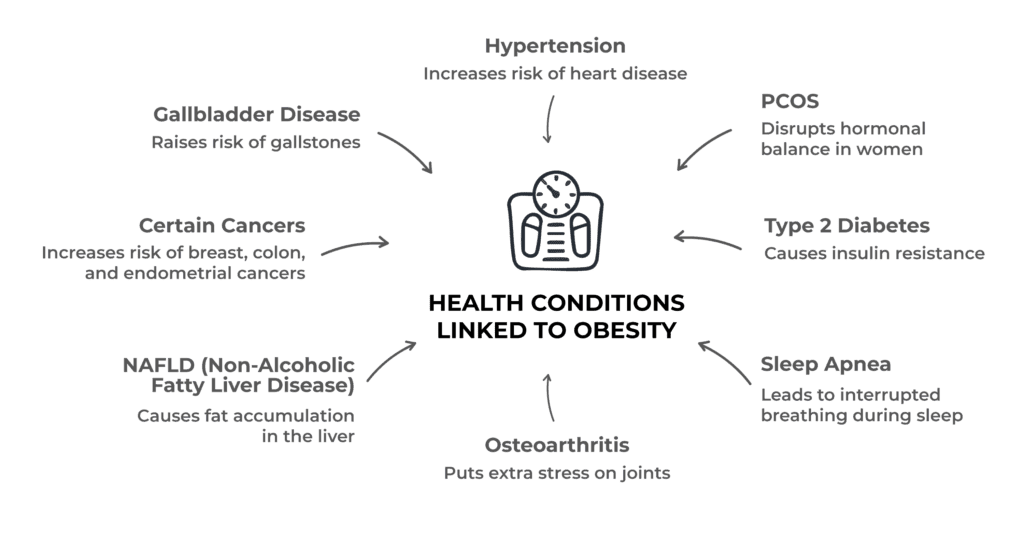
Obesity is not simply about overeating or a lack of willpower. Research confirms that several biological and psychological mechanisms make long-term weight loss difficult:
These factors make it harder to lose weight with diet and exercise alone.
Apollo AyurVAID’s customised approach towards Obesity focuses predominantly on root cause identification and a personalised, precise treatment protocol to attain whole-person health and sustained well-being. This obesity Ayurveda treatment views the patient whole person, considering not just weight but the full spectrum of physical, mental, and metabolic health challenges associated with obesity:
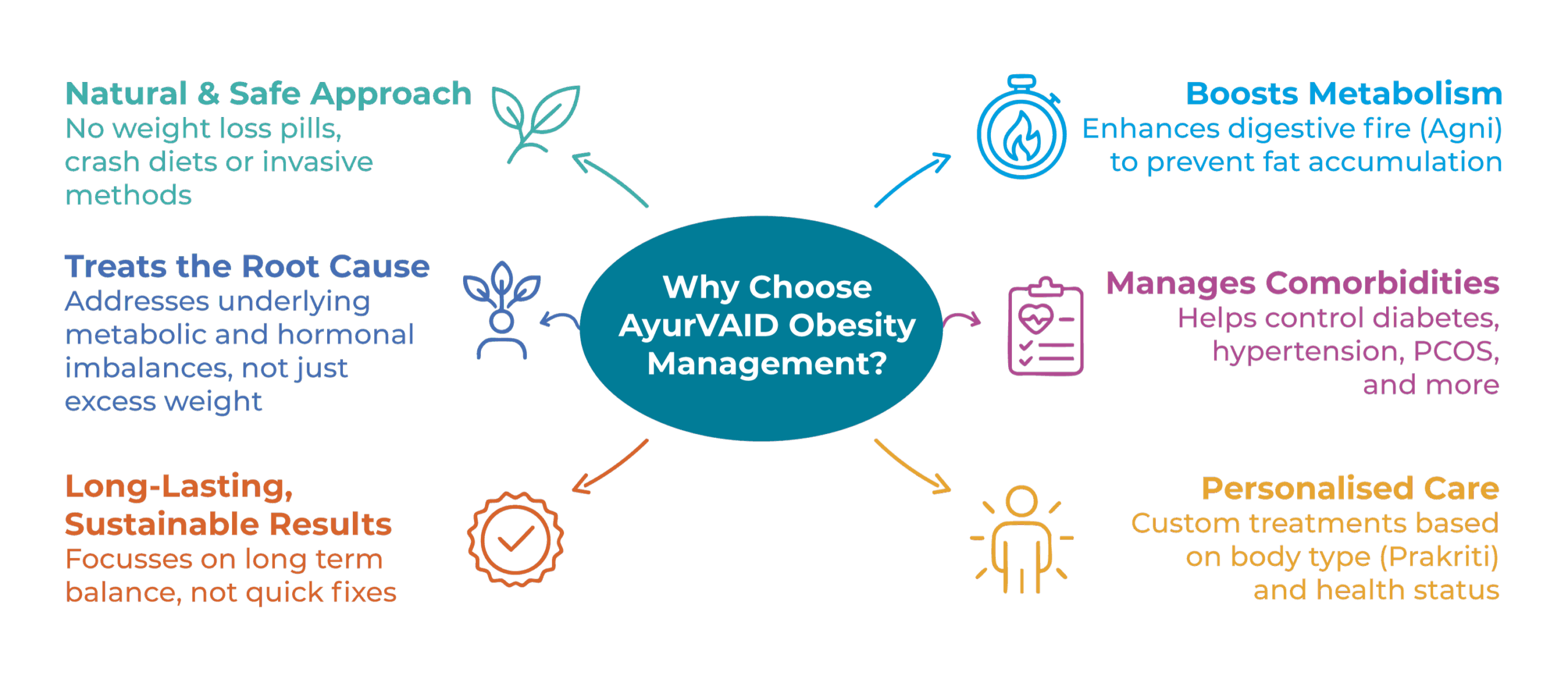
While Ayurveda aims for root cause reversal for Obesity, the scope may be restricted in some cases, as below:
Conventional weight loss programmes primarily focus on a one-size-fits-all approach with a precharted calorie-deficient diet, generic exercises, and medications. These approaches initially provide quick results but do not address the underlying metabolic imbalances, and as a result, the weight loss is temporary.
The AyurVAID approach, on the other hand, identifies the root cause of obesity, considers the Agni (metabolic strength) and Shareera Bala (physical strength) of the individual, and prescribes a customised weight loss plan. Patients undergoing AyurVAID’s obesity treatment can expect:
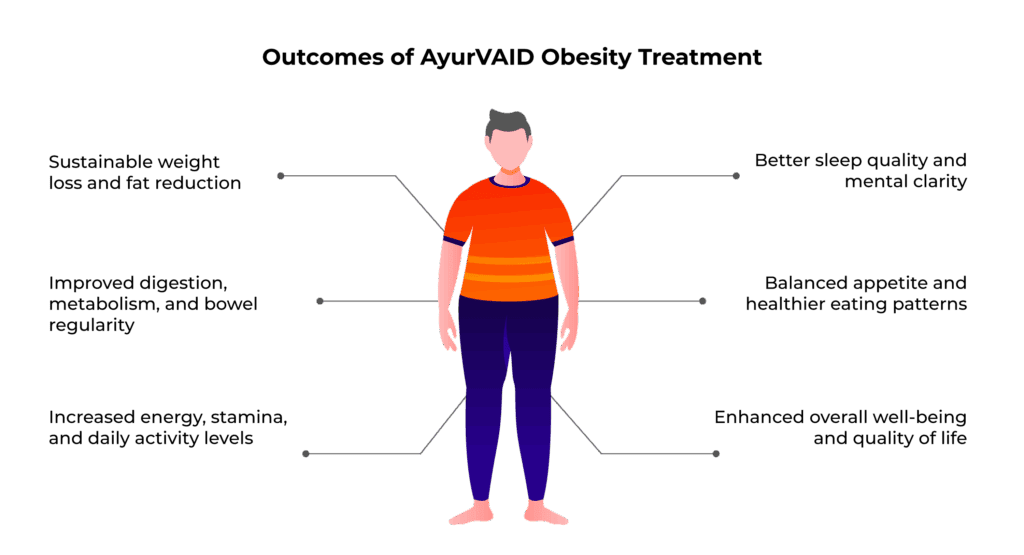
In most cases, obesity is a multifactorial disease. Causative factors can be classified into:
Aharatmaka Nidana (Diet factors):
Viharatmaka Nidana (Lifestyle factors):
Manasika Nidana (Psychological factors):
Anya Nidana (Other factors):
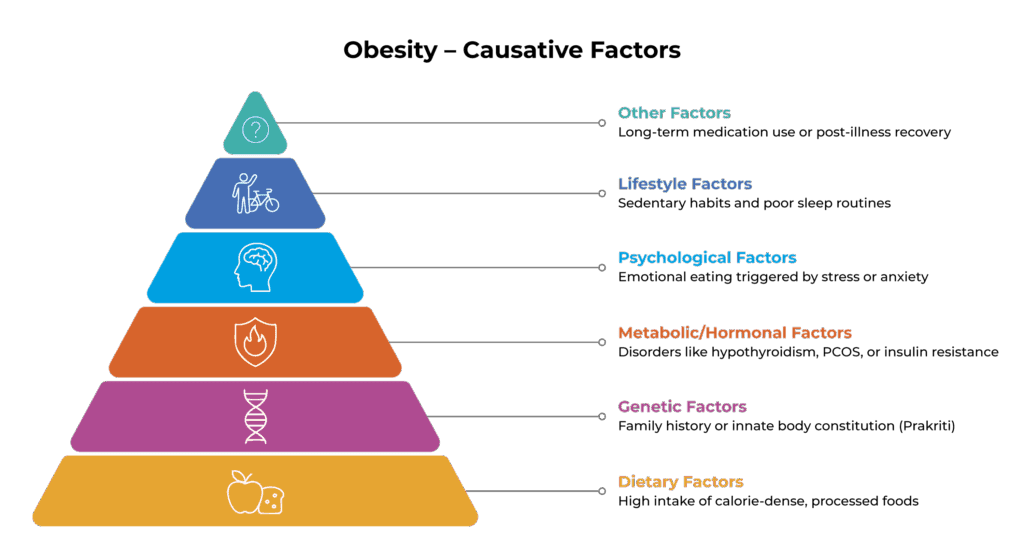
Body Measurements
Respiratory and Functional
Musculoskeletal
Psychological and Emotional Impact
Comorbid Conditions and Diseases
The pathogenesis involves the following key stages:
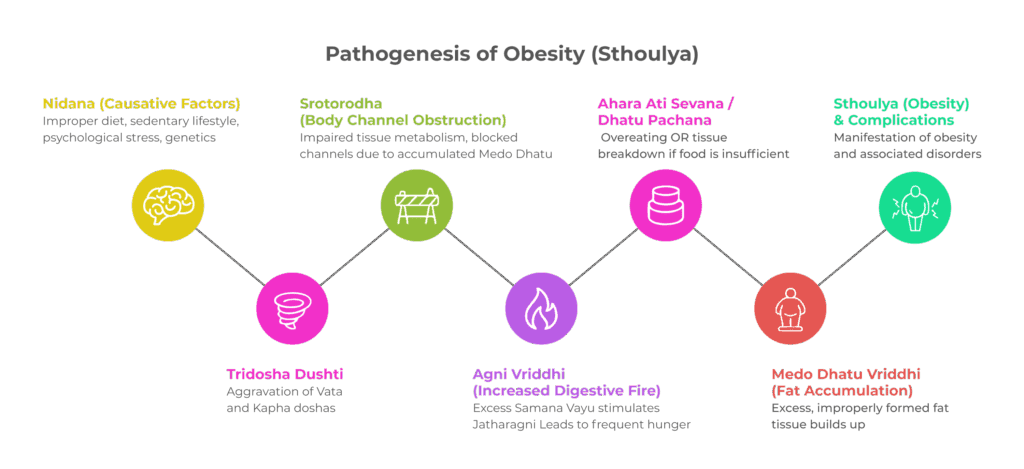
1. Whole-Person Health Assessment
Carried out by our uniquely trained and qualified doctors, this assessment includes an in-depth evaluation of the present and past presentations, Nidana Panchaka (causative factors), and disease pathways through clinical methods such as Ashta Sthana Pariksha (8-fold examination), Dasha Vidha Pariksha (10 factors), and Srota Pariksha.
Diagnosis of obesity for clinical assessment may be confirmed with either measurement of body fat directly through dual-energy X-ray absorptiometry (DEXA), Bioimpedance, using Skin fold calliper, or with Anthropometric measurements (waist circumference or waist-to-hip/height ratio) along with BMI.
2. Disease Tree
A comprehensive disease tree, from root cause to all signs and symptoms, is derived from causative factors, imbalances in doshas, involved sub-systems, and progression.
3. Personalised Protocol-Based Care Plan
Based on the disease tree and assessments, we create a personalised protocol-based treatment strategy for improving the overall metabolism, reducing excess fat, arresting the upcoming secondary complications, and effectively reversing disease pathogenesis. The treatment plan involves classical Ayurveda medicines and therapies with an Ayurveda diet for weight loss and lifestyle modifications.
4. Disease Monitoring and Outcomes Tracking
We track various health parameters, focusing on enhanced physical and emotional well-being, better quality of life, and optimal body weight. The goal is to assess interventions’ efficacy, identify potential complications, and support sustained weight management and improved health.
The primary parameters tracked are anthropometric parameters, including waist circumference, waist-hip ratio, waist-height ratio, BMI, and weight. Monitoring blood pressure, blood glucose, lipid profile, etc., is also practised wherever applicable to minimise health risks. Additionally, standardised tools on quality of life and patient-reported outcomes are incorporated to provide a better understanding of physical and psychological status.
Poorvakarma (Pre-Operative phase):
Objective:
Pradhana Karma (Panchakarma therapies):
Objective:
AyurVAID follows a structured, protocol-driven approach to ensure effective treatment and sustainable recovery.
To ensure effective treatment and track progress, baseline values are taken using:
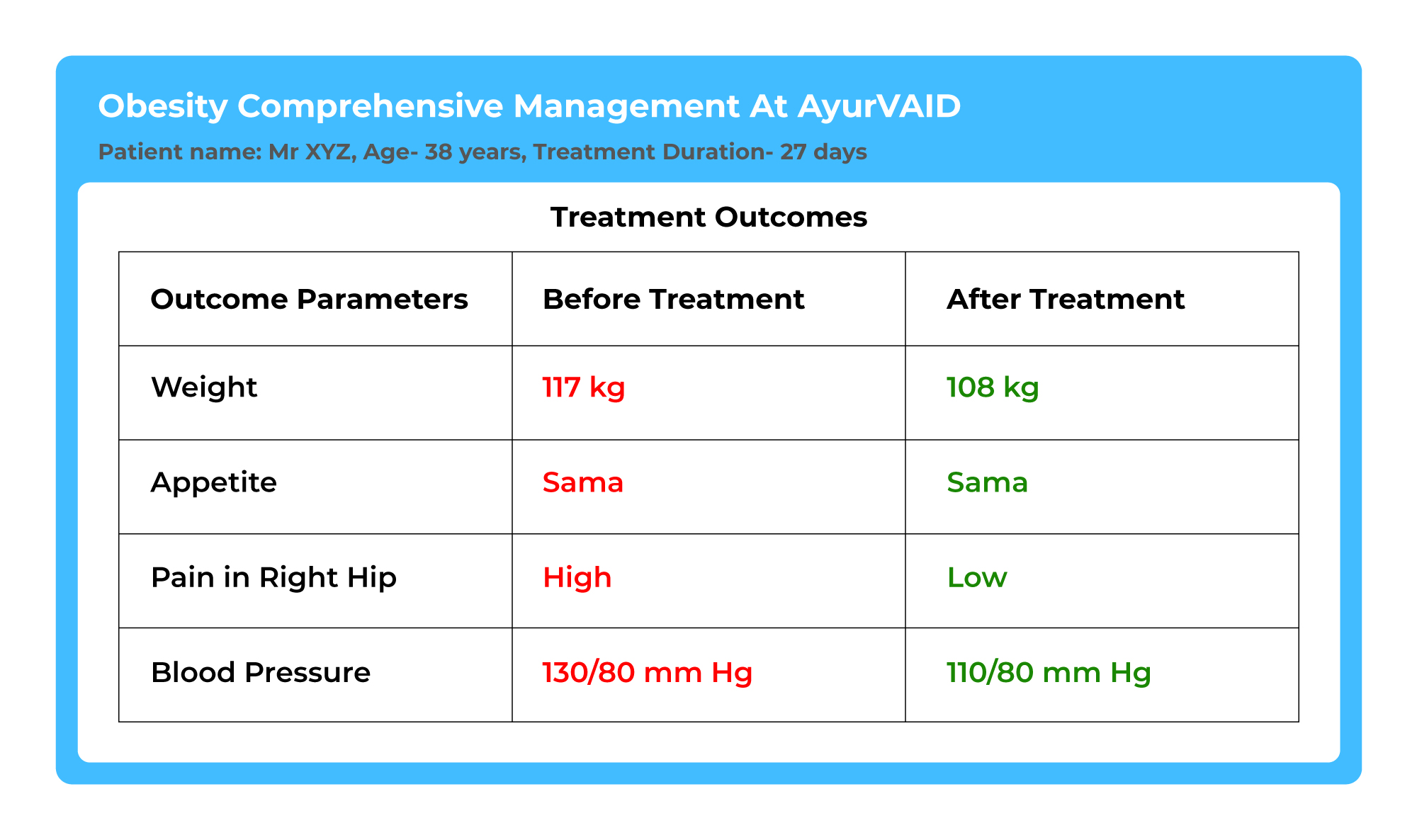
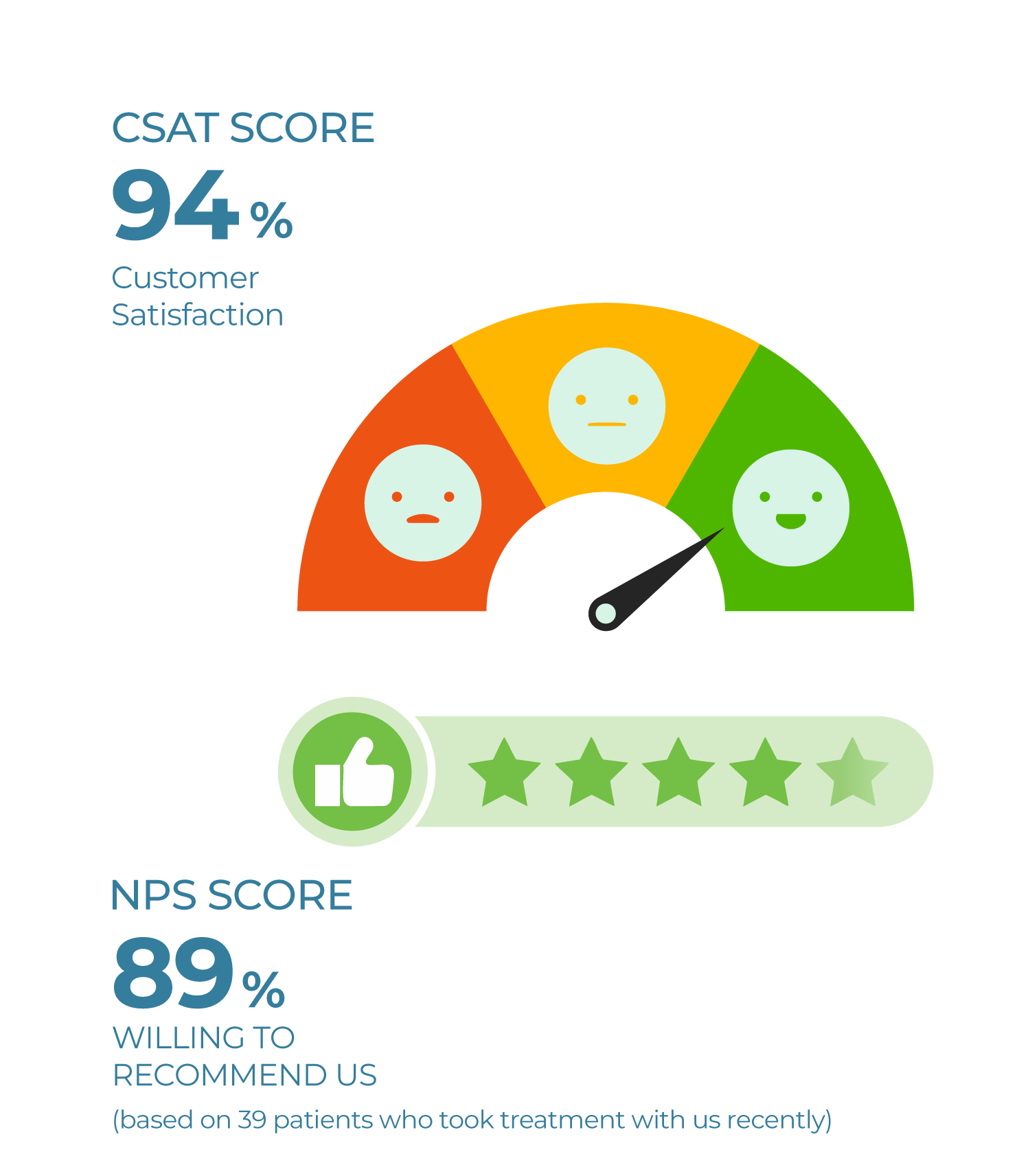
Patients expressed high satisfaction with their Psoriasis treatment, highlighting significant improvements in their conditions.
Case 1:
Mrs. A, a 35-year-old female with metabolic syndrome, obesity (91.1 kg), hypothyroidism, and diabetes mellitus, underwent evidence-based Ayurveda treatment at AyurVAID Hospital, including planned Panchakarma therapies and classical medications. Treatment was tailored per Ayurvedic diagnosis (Kapha-Vata Vruddhi, Sthoulya) and monitored with objective clinical and lab outcomes. After 39 days, she showed significant improvements: weight reduced to 79.9 kg, HbA1c to 6.2%, TSH to 6.31 mcIU/ml, with major symptom relief and no adverse events, demonstrating the safety and efficacy of evidence-based Ayurveda for metabolic health.
Case 1:
Mrs. M, a 58-year-old therapist from Ireland, presented with chronic obesity (104.4 kg), bilateral knee osteoarthritis, low backache, and loss of energy. She underwent a 15-day evidence-based Classical Ayurveda treatment at AyurVAID Hospital, including Panchakarma therapies and internal medications. Post-treatment, she achieved a 9 kg weight loss, improved sleep, digestion, vitality, and moderate reduction in knee pain. Her vitals stabilised, and she was discharged with follow-up dietary, lifestyle, and medication advice.
“I had been suffering from severe shoulder pain since my stroke in 2019, with pain levels reaching up to 100%. After just 20 days of Ayurveda treatment at AyurVAID, the pain came down to 20%. I never knew about this treatment before, but now I’ve truly experienced its benefits. I would definitely recommend Ayurveda to anyone in a similar situation.”
Mr. JCZ
“After my aneurysm, I was completely dependent — I couldn’t walk or move my right side. In the US, therapy was limited. But at AyurVAID, with their integrated approach and intensive therapy — twice-daily physio, Ayurveda sessions, and speech therapy — I can now walk alone, move my right hand almost fully, and live independently. This place gave me back my life.”
Mr. N
As we work hard to improve our services, your feedback is important to us. Please take a moment to help us serve you better.
The information provided in this blog is for general informational purposes only and is not intended as a substitute for professional medical advice, diagnosis, or treatment. Always seek the advice of your physician, Ayurvedic practitioner, or other qualified healthcare provider with any questions you may have regarding a medical condition or treatment.
Subscribe to our hospital newsletter for the latest health tips, updates on services, patient stories, and community events. Sign up today and stay informed!
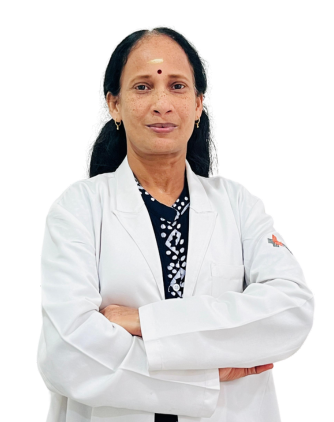


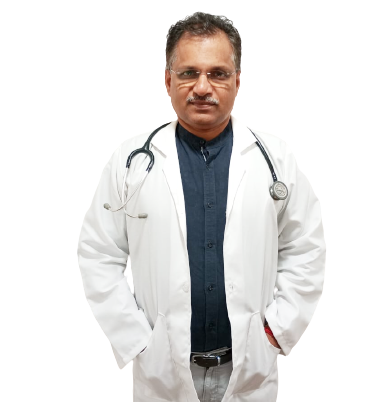



Popular Searches: DiseasesTreatmentsDoctorsHospitalsWhole person careRefer a patientInsurance